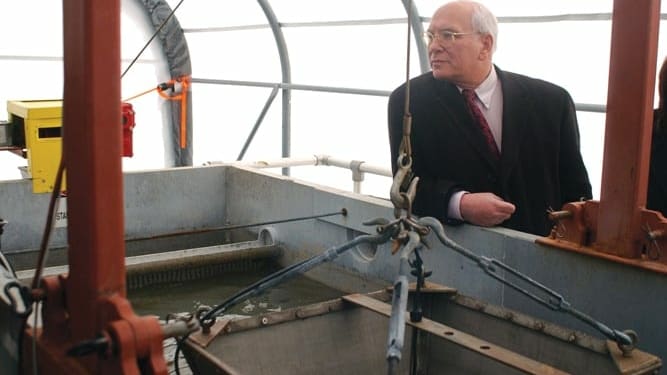Municipalities could eventually view processing wastewater as a much more worthwhile endeavor, ripe with energetic potential. ClearCove Systems, a Rochester-based company, showcased its New York State Energy Research and Develop Authority funded pilot site in Guilderland to Rep. Paul Tonko on Wednesday, Feb. 18. The company’s renewable energy and wastewater treatment technology is housed at the town’s Nott Road Wastewater Treatment Plant. Grant funding was awarded to demonstrate the new technology, which aims to shift wastewater treatment facilities to resource recovery facilities. In Ithaca, a similar pilot program was run for eight months, operating 24/7, and processing approximately 12,000 gallons of wastewater daily, according to ClearCove President Gary Miller. NYSERDA funding totaling $600,000 was pivotal to both pilot sites. “I can safely say, without the support of NYSERDA and this grant, we would not be going into production with our customer,” said Miller. The first in-ground site is projected to be operational early this summer in the Town of Bath. ClearCove’s technology could be timely for many other municipalities, too. The state Department of Environmental Conservation’s Infrastructure Workgroup released a report in March of 2008 on the wastewater infrastructure needs of the state. The report conservatively estimated repairing, replacing, and updating municipal wastewater infrastructure would cost $36 billion over 20 years. Many of the 610 municipal wastewater plants statewide have exceeded their expected useful life, according to the report. There are approximately 1,060 sewage collection systems holding 22,000 miles of sewers, which has more than 30 percent exceeding 60 years old. According to a NYSERDA report, the state’s wastewater industry consumes about 25 percent more electricity than the national average on a per-unit basis. ClearCove offers municipalities the chance to install a new system reducing energy consumption at least 50 percent, producing three times the amount of biogas, and potentially double plant capacity. The system could also reduce a plant’s landfill waste up to 65 percent. “There are no moving parts in the actual tank itself, which is very unique,” said Miller. Treatment tanks can be retrofitted into existing tanks. Energy consumption is primarily reduced through improving the efficiency of a plant’s secondary treatment process. “We remove 100 percent of the grit, 100 percent of the fiber, and nothing larger than 50 microns gets into the secondary process,” Miller said. “We believe by taking the organics out up front and taking out the inorganics that cause problems downstream in technology that we will help enable that technology to function better.” The impact of combined sewage overflow into water bodies during storms is also lessened through its enhanced primary treatment, which removes organic matter from before aeration begins. Tonko said ClearCove’s technology would create jobs and control costs while enhancing the quality of life for surrounding communities. Greg Westbrook, chief executive officer of ClearCove, said the company will “create a lot of jobs” through manufacturing parts needed in-state and construction jobs created with installations. The DEC’s 2008 report cited the Albany area as a location for “particular concern” regarding the impacts of combined sewer overflows, which “contain untreated domestic, commercial and industrial wastes as well as surface runoff.” “This is where our economy needs to be — embracing the American intellect, allow for the patents to flow and energy savings to come,” said Tonko. Supporting grant opportunities and research investment is vital to the nation’s economy, said Tonko, because it can lead to prototypes like ClearCove’s pilot sites. Simply cutting programs does not help the economy, because companies are competing on a global scale. “These folks allow us to make energy efficiency our fuel of choice by doing very clever prototypes and concepts where they test them and grow those concepts in a way that reduces what is a 4 percent stream of energy demand … across the country,” said Tonko. The U.S. Energy Department’s National Renewable Energy Laboratory honored ClearCove with an Outstanding Venture award at its Industry Growth Forum in October. ClearCove is also piloting some systems for food and beverage processing companies.
Capturing wastewater’s wasted potential
Leave Comment



